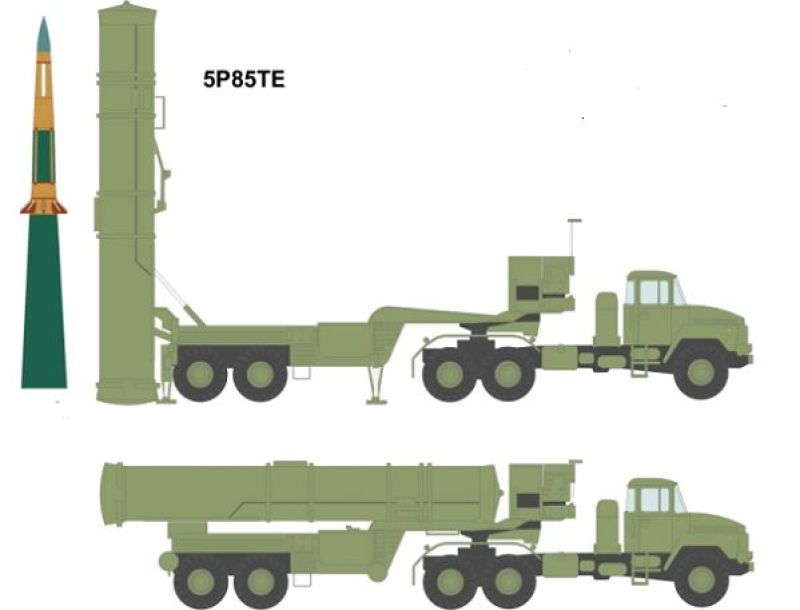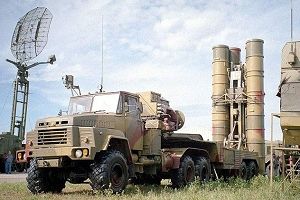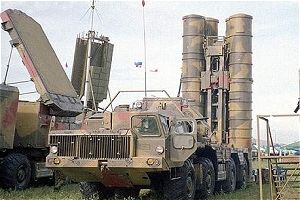Air Defense Vehicles.
S-300 PMU1 SA-20A Gargoyle.

The next big evolutionary step in the S-300P air defense missile system was the introduction of a new export variant the S-300PMU1/SA-10D, in 1993. The S-300PMU1 was developed between 1985 to 1989 and was first shown at the 1992 Moscow Air Show.
Country users: Cyprus, Greece, Russia, Vietnam
Description
The next big evolutionary step in the S-300P air defense missile system was the introduction of a new export variant the S-300PMU1/SA-10D, in 1993. The S-300PMU1 was developed between 1985 to 1989 and was first shown at the 1992 Moscow Air Show. The S-300 PMU1 was developed from S-300 PMU and differs from it by improved technical and operational characteristics. The SA-10D, later redesignated SA-20 Gargoyle, was subjected to what Russian sources describe as a deep modernization with design changes to most key components of the system. The aim was to improve its basic capabilities as a SAM, extend radar and engagement footprints, increase the level of automation in the system, and introduce an anti-ballistic missile capability against ballistic missiles with re-entry speeds of up to 2.8 km/sec. It is intended to engage combat aircraft at all altitudes, cruise missiles and tactical ballistic missiles, making it an equivalent to the PAC-1 and PAC-2 Patriot variants. An S-300 PMU1 air defense missile system is composed of illumination and guidance radar, up to 12 launchers unit, technical support facilities, survey vehicle, power distribution, and conversion devices furnished with power cables. The S-300 PMU1 mobile multichannel air defense missile system can defeat modem and future aircraft, strategic cruise missiles, tactical battlefield ballistic missiles, and other targets with a reflective surface up to 0.02 sq. m. flying at speeds up to 2.800 m/s in massive enemy air raids and heavy clutter and severe ECM environments. The S-300PMU1 air defense missile system can simultaneously engage up to 36 air targets with 72 missiles. The data exchange between grouping combat assets is carried out via encrypted communication lines in the radio or wire operating mode. The command and control assets and air defense missile systems can be separated to a distance of up to 35 km when using repeater stations and up to 100 km when using wire communications and radio-relay stations. The S-300-PMU1 can use the launcher units 5P85TE and 5P85SE.
S-300 variants:
- S-300 F: naval version of the S-300
- S-300 V: four missiles mounted to a tracked vehicle.
- S-300 PS: Four missiles mounted to a Maz-543 truck.
- S-300 PM: Four missiles mounted to a Kraz-260 truck.
- S-300 PM1: upgraded version of S-300 PM, new missile, and association with a new radar system
- S-300 PM2 : upgraded version of S-300 PM1, higher range.
- S-300 PMU: export version of S-300 PS/PM
- S-300 PMU1 : export version of S-300 PM1
- S-300 PMU2 : export version of S-300 PM2
Technical Data
-
Missile Launcher Unit
Four paired missile container launchers are mounted to the rear of the semi-trailer 5P85TE or truck chassis 5P85SE. In the firing position, the missile containers are placed vertically on the rear side of the trailer.
-
Missiles
In addition to the 5V55R, 48N6E and 48N6E2 missiles the S-300PMU-1 can launch two new missiles, the 9M96E1 and 9M96E2. Both are significantly smaller than the previous missiles at 330 and 420 kg and carry smaller 24 kg warheads. The 9M96E1 has an engagement range of 1–40 km and the 9M96E2 of 1-120 km. They are still carried 4 per TEL. Rather than just relying on aerodynamic fins for maneuvering, they use a gas-dynamic system which allows them to have an excellent probability of killing despite the much smaller warhead. The kill despite is estimated at 0.7 against a tactical ballistic missile for either missile.
-
Mobility
The S-300 PMU1 saw the introduction of a third launcher unit variant, the semi-trailer based 5P85T series usually towed by a 6x6 KrAZ-260 tractor. Unlike the earlier road mobile 5P85 TEL, the 5P85T was designed for 'shoot and scoot' rapid erection and launch preparation and was equipped with an integral electrical power generator and a radio data link package for autonomous operation. The key distinction between the 5P85SE and 5P85TE is that the 5P85TE is a road-mobile. The missile systems and the command and control assets are mounted on the Russian truck MAZ-543M cross-country motor-vehicle chassis.
-
Command and Control Vehicles
A typical S-300 PMU1 battery comprises a 30N6E1 engagement radar, a 76N6 (76N6E export) low-level early warning/acquisition radar, and up to a maximum of 12 unit launcher 5P85S / 5P85T (5P85SE / 5P85TE export variant) unit launcher, each with four 48N6 rounds. A PVO battalion then combines up to six batteries, using a shared 64N6E acquisition radar, supported by a 54K6E command post. Both the TEL variants departed from earlier subtypes in that all TELs qualify as "smart" and can be independently addressed by the 30N6E1 battery radar via datalinks. The 83M6E is the command and control asset for the S-300 PMU1 battery. An option for the S-300PM1 cited by two Russian manufacturers is the new LEMZ 96L6 Cheese Board early warning and acquisition radar, a planar array design with electronic beam steering in elevation and mechanical steering in azimuth. It is intended as a replacement for the Tin Shield and Clam Shell.
Specifications
-
Type
Long-range surface-to-air defense missile system
-
Armament
Four missiles Fakel 48N6 or 48N6E,5V55R, 5V55K in individual container
-
Country Users
Cyprus, Greece, Russia, Vietnam
-
Warhead
High Explosive Fragmentation
-
Explosive Load
143 kg
-
Weight Missile
1,799 kg
-
Length Missile
7.5 m
-
Range Missile
5 to 150 km
-
Guidance
Command and radio TVM
-
Radars
Engagement radar 30N6E or 30N6E1, 64N6E acquisition radar or ST-68U Tin Shield - 5N66 Clam Sheel 40V6M, supported by a 54K6E command post and 83M6E command and control system. New option LEMZ 96L6 Cheese Board early warning and acquisition radar
Photo Gallery
5P85TE Launcher vehicle with trailer for S-300 PMU1
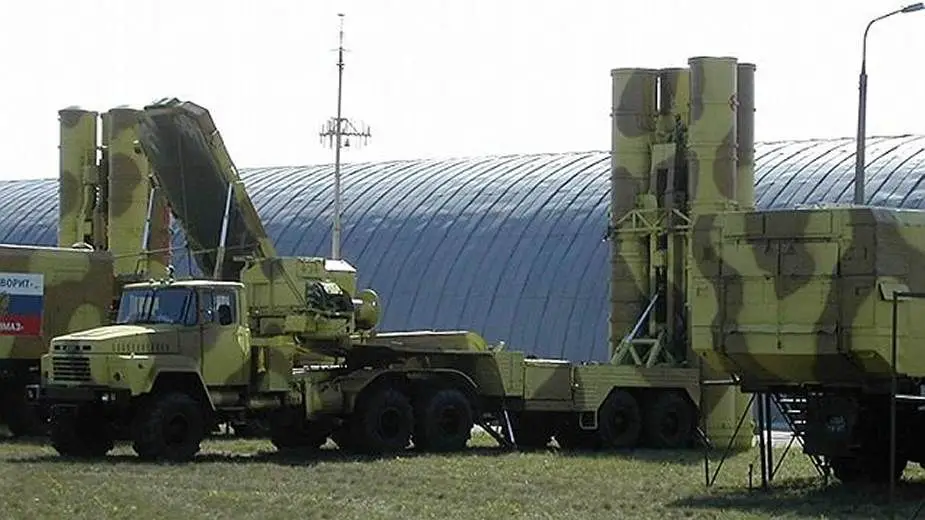
The 5P85TE is the semi-trailer launcher unit for S-300 PMU1, with the heavy truck tractor 6x6 KRAZ-260.
5P85SE Autonomous launcher vehicle for S-300 PMU1
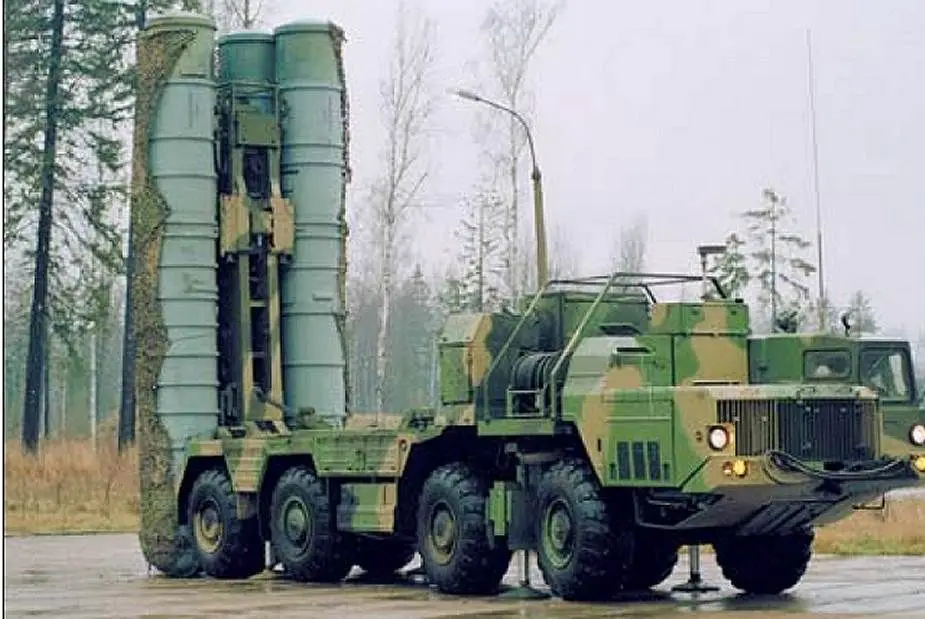
The 5P85SE is the autonomous launcher unit, which can be used with the surface-to-air missile system S-300 PMU1
























